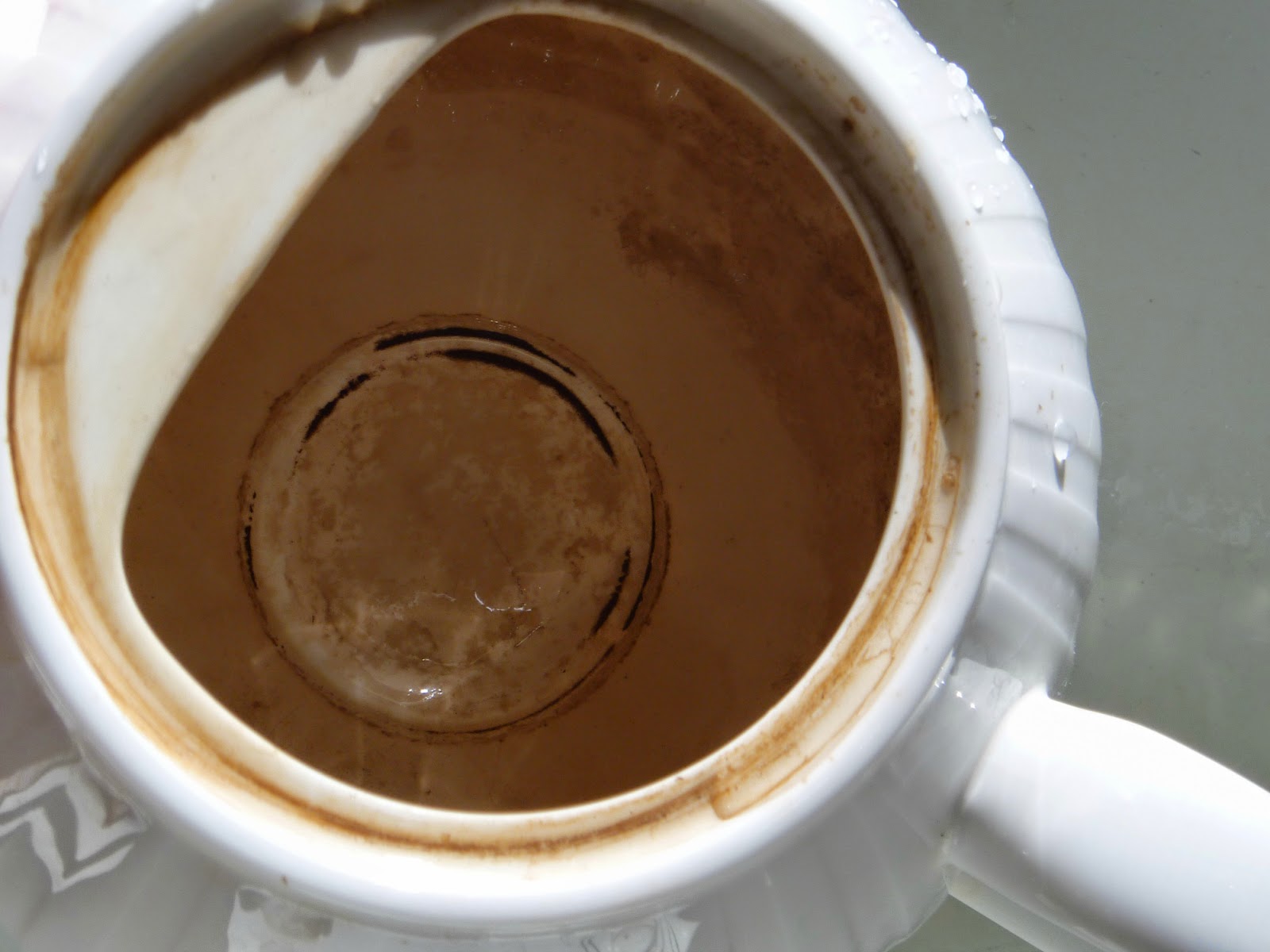By Mary Wald of
Back in
Jane Austin's time tea cups were so valuable, that the lady of the
house would wash them herself instead of entrusting them to the
servants. While we don't have to worry about being that careful
nowadays, antique and vintage items sometimes require a little extra
care. Today I would like to address pottery and china dinnerware.
They are my first loves. Join me for some tips at restoring and
maintaining your fabulous vintage finds and treasures.
Some
times a great find will entail a great deal of work. Maybe your
grandmother was like mine, and fried everything. Not fun things like
twinkies, but chicken, and chops, and other meals . She was not so
great at the cleaning the film that developed on everything sitting
in the kitchen, bless her heart. I learned early on that soaking is
wonderful. Soaking china and glassware in a plastic tub of dish detergent and water can do wonders. Leave it for a few hours, or
overnight, and the grease will slide away. Add a few cups of vinegar
to the bucket, and it will work even better. For extra delicate
items it is nice to lay a towel in the bottom of the tub or sink.
That way they do not clink against the bottom. Do not soak any
painted items, or pieces with wood parts.
The
parts of the pottery and china not covered by the glaze may be a
little harder to get clean. Scrubbing with some "Barkeepers
Friend" works wonders. Barkeepers Friend is fabulous. You can
scrub on glaze and glass without hurting the finish. It can even get
out the brown baked on stuff from kitchenware, and gray marks from
rubbing against metal.
Keep in
mind that it will rub off anything that is not under the glaze. This
includes gold and platinum trim, actual paint, and the prints fired
onto glassware. If you do not know whether a pattern or decoration
is safe to use it on leave it alone until you ask someone. Better
safe than sorry.
One of
the most common things to deal with is lime build up. It occurs in
vases, pitchers, and up around the inside edges of planters. There
is a magical, mystical, non-toxic substance that will dissolve it,
vinegar. Yep, plain old vinegar. I buy it by the two gallon jugs,
because it so handy.
If an
item has heavy lime, as vases often do, fill it with vinegar, and
soak it for awhile. If it has heavy build up you can even leave it
for hours. You can fill the bottom of a bucket with vinegar, and
place a planter upside down in it in order to get up around the edge
where the buildup often is. If you forget it overnight, or even for
days that is just fine. Again, do not soak items that have paint,
metal, or wood parts.
Those of
us who actually drink tea are stuck with the chore of cleaning out
our teapots. Tea leaves a residue and stain on the inside of
teapots. If you pick up a vintage teapot somewhere, and the insides
are brown, you know why.
Here is
my handy dandy trick for getting rid of it. Efferdent tablets! Pop
a couple in at night after you have filled it full of water, and wash
it out in the morning for your morning cuppa. Make sure that the
soaking pot is out of reach of pets and children for safety's sake.
I am not sure whether Efferdent tablets are safe for items with
crazing, so check first before using them on crazed items.
What is
crazing you ask? It is the fine web of lines in the glaze that
appear in many vintage and antique items. Items with crazing are
fine to use for decoration and dry storage. Vases with crazing are
fine to use also. Simply be aware that anything you put onto, say a
crazed plate, will seep down into those cracks and stain the pottery
or porcelain underneath. Crazing is irreversible. There are myths
that you can melt it back together. That is not true, and an oven
may make it even worse. Putting vintage pottery and dinnerware in
the dishwasher can cause crazing, so just don't do it. Your auntie
may have gotten away with it, but is it really worth the risk?
Another myth is that you can bleach the stains away. While it may
lighten some for awhile, the bleach actually starts eating the
pottery away right under the glaze. Sounds scary right? Don't
bleach crazed items, it is simply crazy.
What if
there is a box of the most adorable orphan, shabby chic tea cups and
saucers at a flea market, that would look oh so cute at the next
party, do you use them? Of course! Unless, there are cracks.
Cracks can not be fixed, sorry. Add some steaming hot tea, and they
could pop right apart, burning someone in the process.
However,
they are absolutely lovely decorations. In fact I have been known to
snap apart a cracked tea cup, just so I could glue it back together
to put a teeny tiny plant in it to grow.
Glued
items can be unsafe for food use, especially if you do not know what
kind of glue was used before the item came to you.











2 comments:
What great info, Mary. Some of the tricks I knew....many of them I didn't. I just added "Barkeepers Friend" to my shopping list. Thank you, thank you!
Happened to peruse your blog. Love the information that you provided. I collect vintage Fine China and Glassware. Thought I knew it all until I saw your blog. Great information that I will use again and again!
Post a Comment